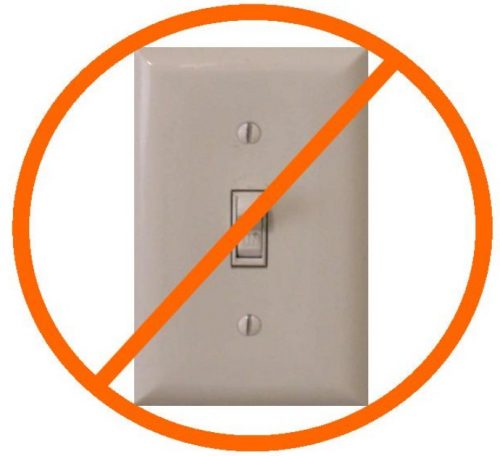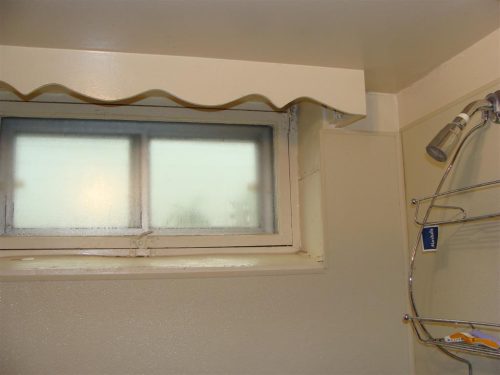The building code doesn’t require fans in bathrooms. It has always been the way, both at the national level and for our local building code here in Minnesota, which follows the national code. Isn’t that weird?
This is a great example of how building codes are minimum standards. I thought about this while doing a home inspection in Minneapolis. The outdoor temperature was about 45 degrees, and every single window in the home was covered with condensation, which was also dripping down the walls.
Oh, and there were no fans installed.
Bathrooms need exhaust fans to help prevent moisture problems, plain and simple. When people take showers and baths, moisture gets pumped in to the air. During the winter, this moisture condenses on windows and walls, and often makes it’s way in to the attic space through attic bypasses, where it will create frost.
Minnesota requires windows in bathrooms that provide a total glazed area of at least three square feet, and half of that must be openable (R303.3). The exception to this rule comes when a bath fan is installed that will exhaust at least 50 cubic feet per minute, or a continuous exhaust system such as a Heat Recovery Ventilator that exhausts at least 20 cubic feet per minute.
The idea of someone actually opening a window on a cold winter day in Minnesota to help reduce moisture in the bathroom is pretty far fetched. If you live in a house without an exhaust fan in a bathroom that gets used for showers or baths, you would do well to install one. Your house will thank you for it.
If you’re going to install a fan, here are a few tips to make sure your house is happy with the fan.
- Choose a good fan. You’ll want to balance noise level, performance, and price. If you buy a cheap noisy fan, you probably won’t even want to turn it on. On the other hand, if you’re installing the fan in a half bath near the living spaces, you might want to install a noisy fan on purpose…
- Make the exhaust duct short. A proper exhaust duct will be as short as possible and take as few turns as possible. The longer the duct and the more twists and turns it takes, the less air flow. A fan rated for 80 cubic feet per minute (CFM) assumes the fan has no duct. As soon as a duct gets added, the actual CFM goes down. I’ve inspected hundreds of houses where there is barely any air flow at bath fan exhausts. If the bath fan is located in the basement and the duct runs up to the roof at the second story, air flow will be pretty pathetic.
- Insulate the duct where it passes through unconditioned spaces, such as the attic.
 If you don’t, moisture will condense it the duct, and might drip down and stain the ceiling. I once inspected a house in Richfield where the exhaust duct was uninsulated in the attic, and so much moisture had accumulated in the duct that it was completely filled with water. The photo at right shows me holding my flashlight up against the duct – this is one of my favorites. Click the thumbnail to see the full version.
If you don’t, moisture will condense it the duct, and might drip down and stain the ceiling. I once inspected a house in Richfield where the exhaust duct was uninsulated in the attic, and so much moisture had accumulated in the duct that it was completely filled with water. The photo at right shows me holding my flashlight up against the duct – this is one of my favorites. Click the thumbnail to see the full version. - Don’t use a standard switch to control the fan. When a single switch controls
 the fan, the fan usually doesn’t end up running long enough to remove enough moisture. A better solution would be to install a timer that runs for at least a half hour, or a humidity sensing switch.
the fan, the fan usually doesn’t end up running long enough to remove enough moisture. A better solution would be to install a timer that runs for at least a half hour, or a humidity sensing switch.
Reuben Saltzman, Structure Tech Home Inspections – Email – Minnesota Home Inspector

